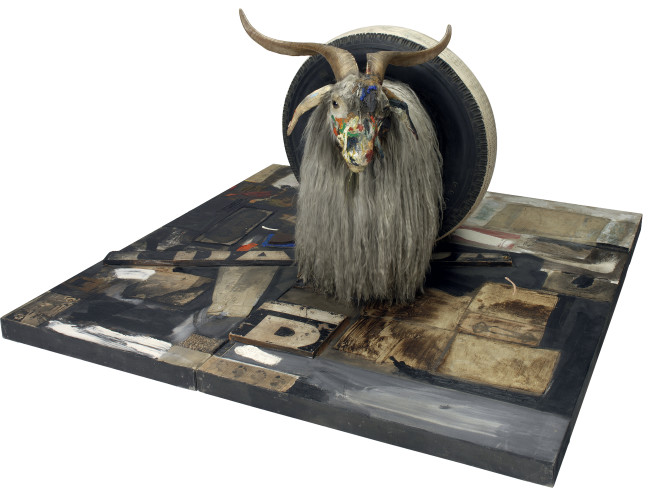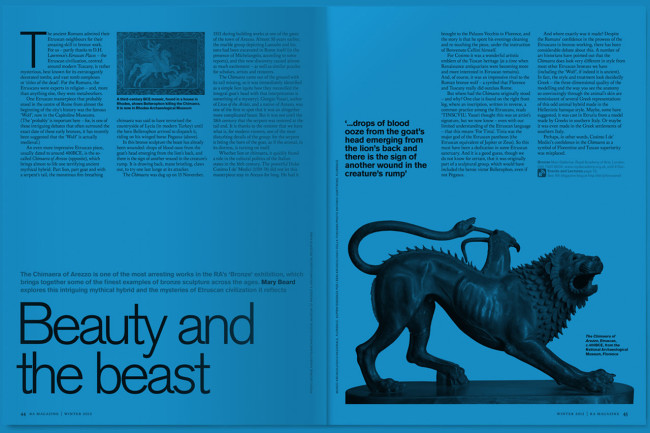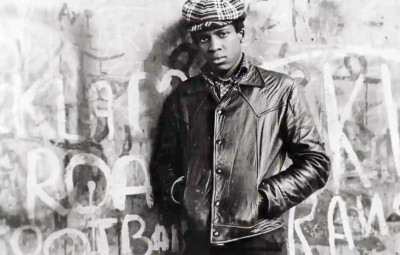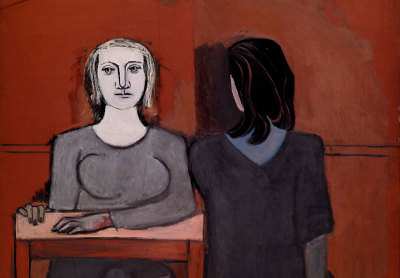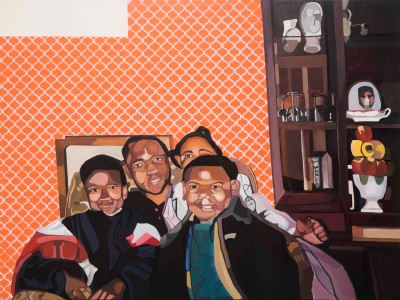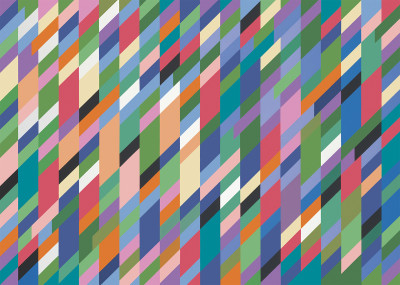Rauschenberg and the most celebrated goat in art history
Rauschenberg and the most celebrated goat in art history
By Simon Wilson
Published 30 November 2016
Simon Wilson deciphers the enigmatic work of American artist Robert Rauschenberg, as a major retrospective opens at Tate Modern.
-
From the Winter 2016 issue of RA Magazine, issued quarterly to Friends of the RA.
It is by very happy coincidence that the RA’s great Abstract Expressionism show precedes and overlaps Tate Modern’s retrospective of the American artist Robert Rauschenberg (1925–2008). We are thus armed with essential context for an artist who, though considered a giant of recent art, has not had a major exhibition in this country since Tate’s previous retrospective in 1980–81, and may therefore be unfamiliar to many.
As we now know, Abstract Expressionism ranged from Pollock’s drips to the colour fields of Rothko. What all the artists involved had in common, however, was the belief that their art acted out on canvas their inner world of emotion and spirituality, and also that the result, to be truly of its time, had necessarily to be abstract.
Arriving on the New York art scene in 1949 just as Abstract Expressionism reached its peak, the young Robert Rauschenberg was having none of that high falutin’ stuff. He believed that art must directly engage with the nitty gritty of the real and indeed urban world. Yet he very shrewdly realised that modern art was at where it was at, and he must build on that. There could be no return to anything like traditional realist painting.
What he did was to develop a new kind of art in which, in his own famous phrase, he operated in “the gap between art and life”. The most celebrated results of this were the “combine” paintings of the mid-1950s. These were a mixture of painting with collage and assemblage using all kinds of found materials, ranging from torn pages from newspapers and magazines to junk gathered in the street – the debris of the city, as it has been called. This notably included discarded stuffed animals. Crucially, some of these elements projected or hung from the canvas to invade the real space of the gallery and the spectator, occupying that “gap”. Some of the combines were completely freestanding.
-
-

Of course, these works picked up on a tradition of collage and assemblage going back to Picasso’s Cubist collages and constructions, as well as the work of the Dadaists and Surrealists who followed. But Rauschenberg carried it much further, completely reinventing it for a new historical moment. The combines are weird, astonishing, arresting visual objects. And they are also powerfully enigmatic. They are made up of real things that the artist had reasons for choosing, yet the critical and curatorial consensus has always been to treat them effectively as more purely visual than they perhaps are.
Quite clearly these works have an iconography. A particularly intriguing case is the most arresting and astonishing of all the combines, Monogram. What we know of its creation reveals that it was very elaborately pondered. It took the artist from 1955 to 1959 to complete and went through several major changes, Rauschenberg making exquisitely meticulous drawings to plot these. And yes, he could draw!
-
-
Rauschenberg said two things about Monogram. Of the title, that he chose it because the merging of the goat and the tyre was like the merging of letters of the alphabet to form a monogram. And then that “they lived happily ever after”. The penetration of the tyre by the heavily horned goat suggests powerful symbolism of the consummation of that marriage, becoming a rich image of the basic act of the creation of new life.
With its simultaneous stark contrast and seamless blending of the industrial and the natural, the piece might also be read as an image of the fraught relationship between the man-made and nature, its base an evocation of the urban dereliction of 1950s Manhattan. This potential ecological message – ahead of its time – is given support by Rauschenberg’s laconic comment on his use of stuffed animals: “Too bad they are dead. I can do something about that.”
-

William Holman Hunt, The Scapegoat, 1854-5.
© Lady Lever Art Gallery, National Museums Liverpool.
-
The goat in Monogram is now probably the most celebrated in art history. But it does have a predecessor in the English Pre-Raphaelite artist William Holman Hunt’s Scapegoat of 1854–56, of which he made two versions, a first small one in Manchester Art Gallery, and a final large one, now in the Lady Lever Art Gallery in Port Sunlight. Both are among the most mesmerisingly strange paintings ever made and the final version was greeted with total bafflement when first shown at the RA. As Hunt made clear, it refers to the description in the Bible’s Book of Leviticus of the ritual, part of the Day of Atonement, of symbolically loading a goat with the sins of the tribes of Israel, then sending it out to die in the desert.
The 1950s was notoriously a decade of the most intense homophobia both in the US and in Britain, when gay men were actively persecuted, and indeed made scapegoats for currents of change that aroused the fear and anxiety of those in authority. Did Rauschenberg, a gay man, know Hunt’s picture? Or, brought up as he was in a fundamentalist Christian household, just the Bible story? Could he have intended his goat, with its oppressively heavy man-made burden, to carry some of the same symbolism?
Robert Rauschenberg, Tate Modern, London, 1 December – 2 April 2017
-
-
Enjoyed this article?
Become a Friend to receive RA Magazine
As well as free entry to all of our exhibitions, Friends of the RA enjoy one of Britain’s most respected art magazines, delivered directly to your door. Why not join the club?

-
